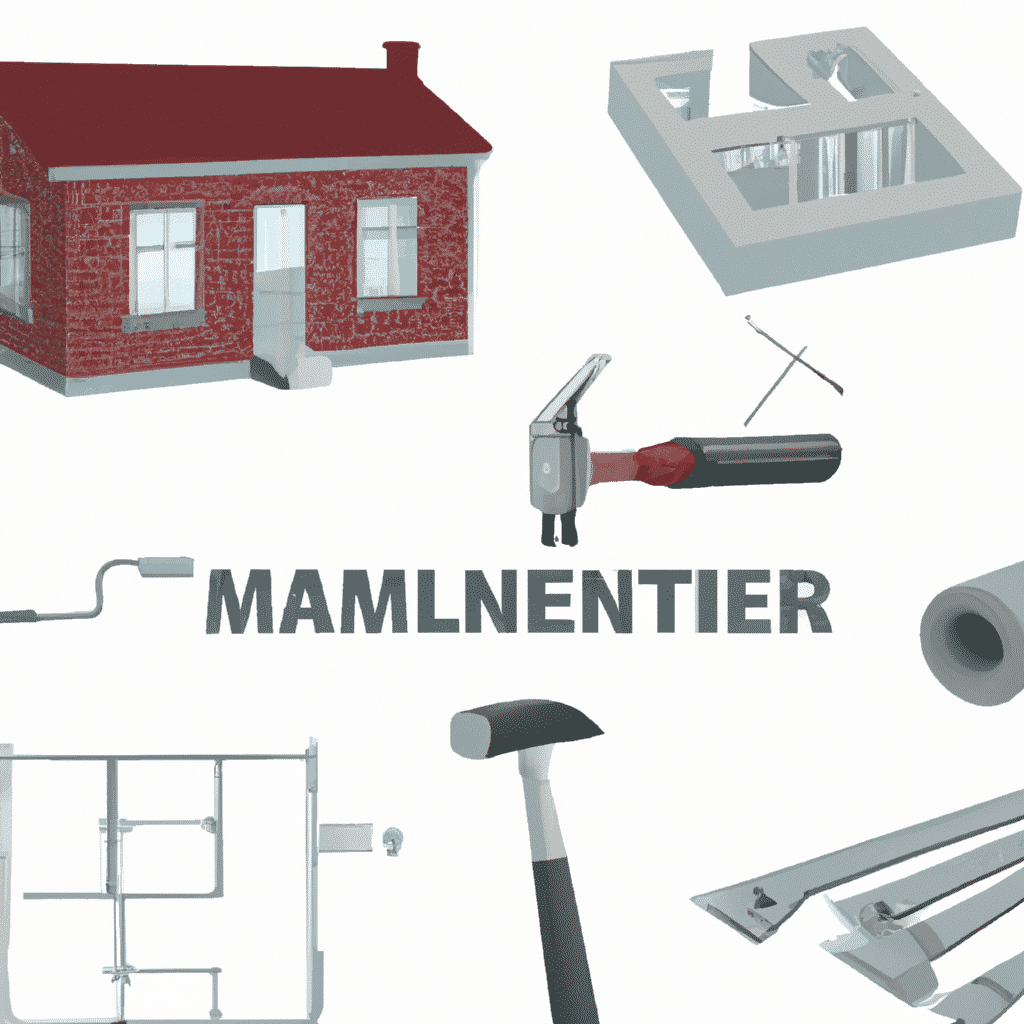So, you’ve got a home that needs some work, huh? Maybe it’s outdated or maybe it’s been damaged and you’re looking to give it a fresh new look. But here’s the thing: when it comes to making changes to your house, there’s a difference between a rebuild and a remodel. And trust me, understanding that difference can save you a lot of time, money, and headaches. So, in this article, we’re going to break it down for you and explain the nuances between a rebuild and a remodel, so you can make an informed decision for your home improvement project.
Definition of Rebuild
Rebuilding vs. Remodeling
When it comes to making changes to your home or property, two terms that are often used interchangeably are “rebuilding” and “remodeling.” However, there is a distinct difference between the two. Rebuilding refers to the process of completely tearing down a structure and constructing it anew. On the other hand, remodeling refers to making changes to an existing structure, typically focused on improving its aesthetics or functionality.
Focus on Structure
One key distinction between rebuilding and remodeling is the focus on the structure. Rebuilding entails a complete demolition of the existing structure, whether it’s a house, commercial building, or any other type of property. The main goal of rebuilding is to start fresh by constructing a new structure from the ground up. Remodeling, on the other hand, focuses on modifying or enhancing specific areas of an existing structure without tearing it down completely.
Complete Demolition
Another significant difference between rebuilding and remodeling is the extent of demolition involved in each process. In rebuilding, a complete demolition of the existing structure is often necessary. This means that everything, from the walls to the foundation, is torn down and removed. The purpose of this is to create a blank canvas for the new construction. Remodeling, on the other hand, may involve partial demolition if certain sections or features need to be removed or replaced.
Starting from Scratch
One of the primary reasons for choosing to rebuild is the opportunity to start from scratch. This means that you have the freedom to design and construct the new structure exactly as you envision it. Rebuilding allows you to address any issues with the existing layout or design and create a space that suits your needs and preferences. In contrast, remodeling works with the existing structure, often requiring compromises and limitations based on what can be modified or added within the constraints of the original construction.
Reasons for Rebuilding
Severity of Damage
One of the most common reasons for choosing to rebuild is the severity of the damage to the existing structure. In cases where a building has experienced significant structural damage due to natural disasters, such as earthquakes or floods, or even fire or extensive deterioration over time, rebuilding may be the best course of action. Repairing the damage to an extent that ensures the structure’s safety and longevity may not always be feasible, making rebuilding a more practical and cost-effective choice.
Outdated or Unsafe Construction
Rebuilding also comes into play when dealing with outdated or unsafe construction. If you have an older home or building that does not meet current building codes or safety standards, remodeling alone may not be sufficient to address these concerns. In such cases, rebuilding allows you to incorporate modern construction techniques, materials, and designs that will ensure a structurally sound and safe living or working environment.
Desire for a Fresh Start
Sometimes, the motivation to rebuild is driven by the desire for a fresh start and a completely new space. Perhaps you have inherited a property that holds sentimental value, but the existing structure is not practical or appealing. By choosing to rebuild, you can maintain the sentimental value of the property while creating a space that aligns with your vision and preferences. Rebuilding allows you to create a new environment that suits your lifestyle and reflects your personal taste.

This image is property of pixabay.com.
Process of Rebuilding
Assessment and Planning
Before embarking on the journey of rebuilding, it is crucial to assess the existing structure and develop a comprehensive plan. This process involves hiring professionals, such as architects and structural engineers, to evaluate the condition of the building and determine the feasibility of rebuilding. This step is essential to ensure that the new structure meets all safety standards and building codes. It also allows for the careful consideration of design elements and layout to create a space that fulfills your needs and desires.
Obtaining Permits
Rebuilding requires obtaining the necessary permits and approvals from local authorities. These permits ensure that the construction is carried out in compliance with zoning regulations, building codes, and other legal requirements. The permit application process typically involves submitting detailed plans, specifications, and other relevant documents for review. It is essential to work closely with your architect or contractor to prepare the required paperwork and navigate the permitting process smoothly.
Demolition
Once all the necessary permits are obtained, the demolition phase begins. This involves the removal of the existing structure, which can be a complex and labor-intensive process. Specialized equipment and techniques are used to carefully dismantle and dispose of the old materials. Safety precautions must be taken to protect workers and neighboring properties during this phase. Proper waste management and recycling practices should also be followed to minimize the environmental impact.
Construction
After the demolition is completed, the construction phase begins. This involves building the new structure based on the plans and specifications developed during the assessment and planning stage. Skilled contractors and tradespeople collaborate to execute the design, ensuring that all elements, from the foundation to the finishing touches, are constructed with precision and attention to detail. Regular inspections are conducted to verify compliance with building codes and to ensure that the construction progresses according to the established timeline.
Cost of Rebuilding
Higher Cost
Rebuilding is generally more expensive than remodeling due to the extensive nature of the work involved. The costs are driven by factors such as the complete demolition of the existing structure, the construction of an entirely new building, and the incorporation of modern materials and design elements. The complexity of the project, as well as the size and location of the property, can also impact the overall cost. It is important to carefully budget and plan for the expenses associated with rebuilding to avoid any financial surprises during the process.
Potential for Insurance Coverage
In certain cases, insurance coverage may help offset the costs of rebuilding. If the rebuilding is necessitated by a covered event, such as a natural disaster or vandalism, your insurance policy may provide financial assistance. However, it is crucial to carefully review your policy and consult with your insurance provider to understand the extent of coverage and any applicable deductibles or limitations. Insurance coverage can significantly ease the financial burden of rebuilding, making it a more feasible option for some homeowners.

This image is property of pixabay.com.
Definition of Remodel
Remodeling vs. Rebuilding
While rebuilding focuses on starting anew with a complete demolition and reconstruction, remodeling involves making changes to an existing structure to improve its aesthetics and functionality. Remodeling allows for modification and enhancement of specific areas or features within the constraints of the existing structure.
Focus on Aesthetics and Functionality
Remodeling primarily focuses on improving the aesthetics and functionality of a space. This can include updating finishes, such as flooring, paint, and fixtures, as well as modifying layouts, adding or removing walls, or upgrading appliances and systems. The goal of remodeling is to enhance the overall look and feel of the space while optimizing its functionality according to the homeowner’s preferences and needs.
Partial Construction
Unlike rebuilding, remodeling does not require a complete demolition of the existing structure. Instead, it involves working with the existing framework and selectively modifying or replacing certain elements. This can include removing walls to create an open floor plan, expanding rooms, or adding new features such as a bathroom or a kitchen island. Remodeling allows for more flexibility in terms of the scale and scope of the changes, as it does not involve starting from scratch.
Working with Existing Structure
One of the advantages of remodeling is the ability to preserve certain elements or features of the existing structure that hold sentimental or historical value. By working within the framework of the current building, you can retain elements such as architectural details or unique characteristics that contribute to the charm and character of the space. Remodeling allows for a balance between preserving the original structure and incorporating modern design elements, creating a harmonious blend of the old and the new.
Reasons for Remodeling
Updating Outdated Design
One of the primary motivations for remodeling is updating an outdated design. Design trends and preferences change over time, and what may have been considered stylish or functional in the past may now feel outdated or inefficient. Remodeling provides an opportunity to rejuvenate the space by incorporating current design trends, materials, and finishes. Whether it’s revamping a kitchen or refreshing a bathroom, remodeling allows for a modern and personalized look that aligns with current aesthetics and functional requirements.
Improving Functionality
Remodeling also offers a chance to enhance the functionality of a space. As our needs and lifestyles evolve, certain areas or features of a home may no longer serve their purpose adequately. Whether it’s a cramped kitchen, insufficient storage space, or outdated electrical and plumbing systems, remodeling allows for modifications and upgrades that enhance the practicality and usability of the space. By carefully considering your specific needs, you can tailor the layout and features of the remodeled space to better suit your lifestyle.
Increasing Property Value
Remodeling can significantly increase the value of your property. By improving the aesthetics and functionality of a space, you make it more appealing to potential buyers or tenants. Upgrading key areas such as kitchens and bathrooms, adding additional living space, or incorporating energy-efficient features can attract a broader market and command a higher selling or rental price. Remodeling with a focus on improving property value can yield a substantial return on investment, making it a worthwhile endeavor for homeowners looking to enhance the marketability of their property.

This image is property of pixabay.com.
Process of Remodeling
Planning and Design
The first step in the remodeling process is careful planning and design. This involves assessing the existing space, identifying areas for improvement, and establishing your remodeling goals and budget. Working with a professional designer or architect can be beneficial in developing a comprehensive plan that takes into account both aesthetics and functionality. The planning stage also includes selecting the desired materials, finishes, and fixtures to create the desired look and feel for the remodeled space.
Obtaining Permits
Similar to rebuilding, obtaining the necessary permits is an essential part of the remodeling process. Depending on the scope and scale of the project, you may need to secure permits from local authorities to ensure compliance with building codes, safety regulations, and zoning requirements. It is important to review the specific permitting process for your area and work closely with your contractor or architect to gather the required documentation and submit the necessary applications.
Demolition (if necessary)
Depending on the extent of the remodeling project, demolition may be required to remove existing features or elements. This can involve removing walls, tearing out old cabinetry or fixtures, or stripping down finishes such as flooring or wallpaper. The demolition phase must be carefully coordinated to minimize disruption and ensure safe removal of materials. Proper disposal of debris and waste is essential during this phase, and recycling whenever possible is an environmentally friendly choice.
Construction and Renovation
Once the planning, permits, and demolition stages are completed, the construction and renovation phase begins. This involves executing the design plans, including installing new features, upgrading finishes, and making any necessary structural changes. Skilled contractors and tradespeople carry out the construction work, ensuring that the remodeling is done to the highest quality standards. Regular inspections and communication with the project team help keep the process on track and address any issues that may arise during construction.
Cost of Remodeling
Varies Based on Scale and Design
The cost of remodeling varies greatly depending on the scale and complexity of the project, as well as the desired design and finishes. Small remodels, such as updating a bathroom or replacing flooring, can be relatively affordable compared to larger-scale projects like a kitchen remodel or adding an addition to the home. The choice of materials, fixtures, and finishes also significantly impacts the overall cost. It is important to establish a budget and prioritize areas or features that are most important to you to ensure that the remodeling project remains within your financial means.
Potential for Cost Savings
Remodeling also presents opportunities for cost savings compared to the total cost of rebuilding. By working within the existing structure, the need for complete demolition and new construction is eliminated, resulting in potential cost savings. Additionally, remodeling allows for more flexibility in terms of materials and finishes, offering a range of options at different price points. Careful planning and working with professionals can help maximize cost savings while still achieving the desired improvements and updates to your space.

Factors to Consider
Extent of Changes
One of the factors to consider when deciding between rebuilding and remodeling is the extent of the changes you desire. If you are looking for a complete transformation or a fresh start, rebuilding may be the better option. However, if you are content with improving specific areas or features while maintaining the overall structure, remodeling may be a more suitable choice. Assessing your goals and priorities will help you determine the scope of work that aligns with your vision for your home or property.
Budget
Budget is an important consideration when deciding between rebuilding and remodeling. Rebuilding generally involves a higher cost due to the complete demolition and reconstruction process. If budget is a significant constraint, remodeling may offer a more cost-effective solution by allowing you to focus the improvements on specific areas or features without the need for extensive construction. Evaluating your financial resources and determining the maximum amount you can allocate to the project will help guide your decision-making process.
Timeline
The timeline for completion is another crucial factor to consider. Rebuilding typically involves a more extended timeline due to the complete demolition and construction process. The complexity of the project and the availability of contractors and materials can also impact the timeline. Remodeling may offer a shorter timeline, especially for smaller-scale projects. However, it is important to note that larger remodeling projects can still be time-consuming, depending on the specific scope of work. Understanding your desired timeline and any constraints related to time can help you make an informed decision.
Personal Preferences
Ultimately, personal preferences play a significant role in the decision between rebuilding and remodeling. Consider your vision for the space, the level of customization you desire, and the emotional attachment you have to the existing structure. If sentimental value or preserving certain features is a priority, remodeling may be the better choice. On the other hand, if you crave a completely fresh start or have a specific design concept in mind that cannot be achieved within the limitations of the existing structure, rebuilding may be the more suitable option.
Choosing between Rebuilding and Remodeling
Consulting with Professionals
To make an informed decision between rebuilding and remodeling, it is advisable to consult with professionals in the construction and design industry. Architects, contractors, and experienced remodelers can provide valuable insights and advice based on their expertise. They can assess the condition of the existing structure, understand your goals and preferences, and guide you in determining the best course of action. Their expertise can help you navigate the complexities of the rebuilding or remodeling process and provide an estimate of the associated costs and timeline.
Assessing Scope of Work
Determining the scope of work is crucial when choosing between rebuilding and remodeling. Assess the areas or features you want to change and evaluate if these modifications require a complete demolition or can be achieved through remodeling. Consider the potential impact on the functionality, aesthetics, and value of the property. By understanding the magnitude of the changes you desire, you can better evaluate whether rebuilding or remodeling is the more suitable option to achieve your goals.
Evaluating Costs
Cost is a significant factor in decision-making between rebuilding and remodeling. Evaluate the estimated costs associated with both options and compare them within the context of your budget and financial resources. Consider the long-term implications of the investment, such as potential increases in property value. Additionally, review the potential for insurance coverage, as certain scenarios may make one option more financially viable than the other. By carefully assessing the costs and financial implications, you can make an informed and realistic decision that aligns with your budget and overall objectives.
In conclusion, the decision between rebuilding and remodeling requires careful consideration of various factors, including the condition of the existing structure, the desired changes, budget constraints, timeline expectations, and personal preferences. Rebuilding offers a fresh start and the opportunity to create a new structure tailored to your needs, while remodeling focuses on enhancing specific areas or features within the existing structure. Consulting with professionals, assessing the scope of work, and evaluating the associated costs are crucial steps in making an informed decision that aligns with your vision for your home or property.

